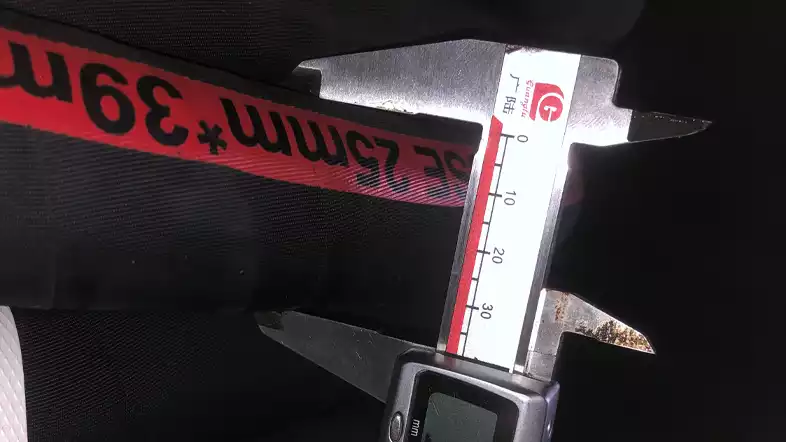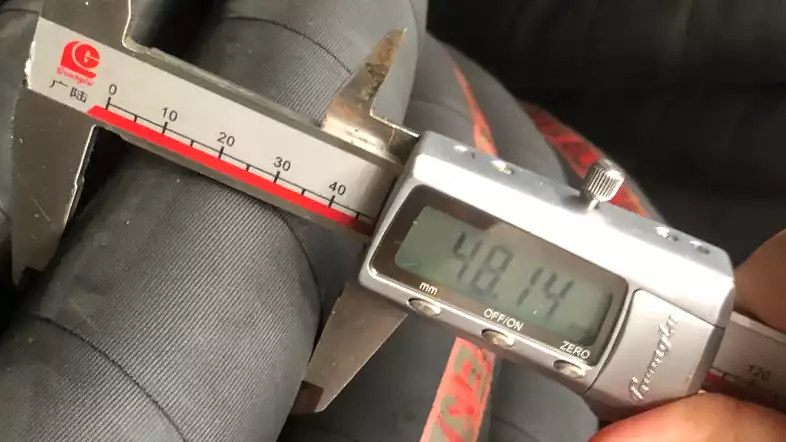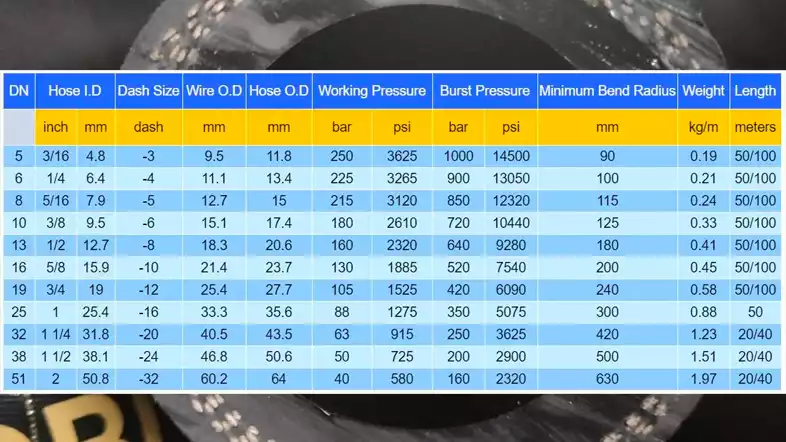![]()
Hydraulic hoses are critical components in hydraulic systems, responsible for transferring fluid power from one component to another. These hoses come in different diameters, which affect their performance, efficiency, and safety. Choosing the right hydraulic hose diameter is crucial to ensure optimal system performance and prevent downtime due to equipment failure or safety hazards.
Understanding Hydraulic Hose Diameter
Hydraulic hose diameter refers to the inside diameter of the hose. It is measured in inches or millimeters and determines the maximum flow rate of the hydraulic fluid through the hose. The diameter affects the pressure drop, which is the difference between the inlet and outlet pressures of the hose.
Hydraulic Hose I.D and O.D
Hydraulic hoses have both an inner diameter (I.D.) and an outer diameter (O.D.). The I.D. is the measurement of the inside diameter of the hose, while the O.D. is the measurement of the outside diameter of the hose.
The I.D. of a hydraulic hose is important because it determines the flow rate of the hydraulic fluid through the hose. A larger I.D. will allow for a higher flow rate, while a smaller I.D. will restrict the flow rate.
The O.D. of a hydraulic hose is important because it determines the size of the fittings that can be used with the hose. The fittings must match the O.D. of the hose in order to create a secure and leak-free connection.
When selecting a hydraulic hose, it is important to consider both the I.D. and O.D. to ensure that it is compatible with your system and can handle the required flow rate and pressure.
Importance of Choosing the Right Hydraulic Hose Diameter
Choosing the right hydraulic hose diameter ensures that the fluid flow rate is sufficient to meet the system’s demands. If the hose diameter is too small, it can cause excessive pressure drop, leading to poor performance and increased wear and tear on the system’s components. On the other hand, if the diameter is too large, it can result in unnecessary fluid flow, which can increase energy consumption and cause heating issues.
How to Measure Hydraulic Hose Diameter?

Measuring the hydraulic hose diameter is a critical step in determining the appropriate hose size for your hydraulic system. Here is a step-by-step guide to measure hydraulic hose diameter accurately:
- Obtain a ruler or measuring tape with inches or millimeters as the unit of measurement.
- Determine the hose’s inside diameter by measuring the distance between the inner edges of the hose.
- If the hose has a cover or coating, peel it back to expose the inner diameter.
- Measure the diameter at the center of the hose to ensure accuracy.
- If the hose has a wire braid or spiral reinforcement, measure the diameter of the reinforcement as well.
- Record the measurement in inches or millimeters, depending on the unit of measurement on the ruler or measuring tape.
- Compare the measured diameter with the manufacturer’s specifications to determine the appropriate hose size for your hydraulic system.
It is crucial to measure the hydraulic hose diameter accurately to ensure optimal system performance and prevent equipment failure or safety hazards. If you are unsure about how to measure the diameter or select the appropriate hose size, consult a hydraulic systems expert or the manufacturer’s specifications for guidance.
Hydraulic Hose Diameter Chart
A hydraulic hose diameter chart provides a reference guide to the most common hydraulic hose diameter sizes and their corresponding measurements in both inches and millimeters. Here is a hydraulic hose diameter chart:
Hydraulic Hose Diameter Chart:
| Size (inches) | Size (mm) |
|---|---|
| 1/4 | 6 |
| 3/8 | 10 |
| 1/2 | 13 |
| 5/8 | 16 |
| 3/4 | 20 |
| 1 | 25 |
It is essential to note that there may be variations in hydraulic hose diameter sizes depending on the manufacturer and the specific hydraulic system’s requirements. Therefore, it is crucial to consult the manufacturer’s specifications or an expert in hydraulic systems to determine the appropriate diameter size for your specific application.
3/8 Hydraulic Hose Outside Diameter
The outside diameter of a 3/8 hydraulic hose depends on the type and construction of the hose. However, the outside diameter of a typical 3/8 hydraulic hose ranges from 0.75 inches (19.05 mm) to 0.96 inches (24.38 mm).
It is essential to know the outside diameter of the hydraulic hose as it affects the routing and installation of the hose. The outside diameter determines the minimum bend radius and the amount of space required to accommodate the hose.
When selecting a hydraulic hose size, it is crucial to consider both the inside diameter and outside diameter of the hose. It is also essential to select a hydraulic hose that meets or exceeds the manufacturer’s specifications and industry standards.
Using the wrong size or type of hydraulic hose can result in system failure, damage, or injury. Therefore, it is crucial to consult an expert in hydraulic systems or the manufacturer’s specifications for guidance and recommendations on selecting the appropriate hydraulic hose size and type for your specific application.
Hydraulic Hose Size Calculator

A hydraulic hose size calculator is a tool used to determine the appropriate hydraulic hose size based on the flow rate, velocity, pressure, and temperature of the hydraulic system. Here is a simple hydraulic hose size calculation:
- Determine the flow rate (Q) in gallons per minute (GPM) or liters per minute (LPM).
- Calculate the velocity (V) in feet per second (FPS) or meters per second (MPS) using the formula:
V = (Q x 0.3208) / A
Where: Q = Flow rate in GPM or LPM A = Cross-sectional area of the hose in square inches (in²) or square centimeters (cm²)
- Determine the pressure drop (ΔP) in pounds per square inch (PSI) or bars using the formula:
ΔP = K x (V² / 2g)
Where: K = Pressure drop coefficient (0.017 for smooth bore hoses, 0.027 for convoluted hoses) V = Velocity in FPS or MPS g = Acceleration due to gravity (32.2 ft/s² or 9.81 m/s²)
- Calculate the maximum allowable pressure (MAP) in PSI or bars using the formula:
MAP = (ΔP x SF) + EP
Where: SF = Safety factor (typically 4:1 or 2.5:1) EP = End pressure (pressure at the end of the hose)
- Select the hydraulic hose size based on the maximum allowable pressure (MAP) and the manufacturer’s specifications or recommendations.
It is crucial to note that this hydraulic hose size calculator is a basic tool and may not account for all variables or factors that affect hydraulic system performance. Therefore, it is essential to consult an expert in hydraulic systems or the manufacturer’s specifications for guidance and recommendations on selecting the appropriate hydraulic hose size for your specific application.
Factors to Consider When Choosing Hydraulic Hose Diameter

When choosing the hydraulic hose diameter, there are several factors to consider to ensure optimal hydraulic system performance and safety. These factors to choose a hydraulic hose include:
- Flow Rate: The flow rate of the hydraulic system is the volume of fluid that passes through the hose per unit time. It is essential to choose a hydraulic hose with an appropriate inside diameter that can accommodate the required flow rate.
- Velocity: The velocity of the fluid passing through the hydraulic hose should be within the manufacturer’s recommended limits. An excessively high velocity can cause erosion, while a low velocity can result in the formation of sediment or contamination.
- Pressure: The hydraulic hose must be able to handle the maximum working pressure of the hydraulic system. A hose with a smaller inside diameter may not handle the required pressure, resulting in hose failure and potential damage to the system.
- Temperature: The temperature of the hydraulic fluid can affect the performance and lifespan of the hydraulic hose. It is important to choose a hose with a suitable temperature range that can withstand the maximum operating temperature of the system.
- Application: The specific application and environment of the hydraulic system can influence the choice of hydraulic hose diameter. For example, a hydraulic hose used in a harsh environment may require a larger diameter to ensure adequate flow and pressure.
- Hose Length: The length of the hydraulic hose can impact the flow rate, pressure, and velocity of the system. It is important to choose a hose with an appropriate inside diameter and length to minimize pressure drop and ensure optimal system performance.
In summary, choosing the appropriate hydraulic hose diameter requires consideration of various factors such as flow rate, velocity, pressure, temperature, application, and hose length. It is crucial to consult an expert in hydraulic systems or the manufacturer’s specifications for guidance and recommendations on selecting the appropriate hydraulic hose diameter for your specific application.
Common Hydraulic Hose Diameter Sizes

The most common hydraulic hose diameter sizes are ¼ inch, ⅜ inch, ½ inch, ⅝ inch, and ¾ inch. The selection of the diameter depends on the system’s requirements, such as the flow rate, pressure, and temperature. It is essential to consult the manufacturer’s specifications or an expert in hydraulic systems to determine the appropriate diameter size.
Here is a table showing common hydraulic hose diameter sizes and their corresponding inside and outside diameters:
| Hose Size | Inside Diameter | Outside Diameter |
|---|---|---|
| 1/4 | 0.25 in (6.35 mm) | 0.52 in (13.21 mm) |
| 3/8 | 0.38 in (9.53 mm) | 0.75 in (19.05 mm) |
| 1/2 | 0.50 in (12.70 mm) | 0.87 in (22.10 mm) |
| 5/8 | 0.63 in (15.88 mm) | 1.00 in (25.40 mm) |
| 3/4 | 0.75 in (19.05 mm) | 1.16 in (29.46 mm) |
| 1 | 1.00 in (25.40 mm) | 1.50 in (38.10 mm) |
| 1 1/4 | 1.25 in (31.75 mm) | 1.85 in (46.99 mm) |
| 1 1/2 | 1.50 in (38.10 mm) | 2.17 in (55.12 mm) |
| 2 | 2.00 in (50.80 mm) | 2.65 in (67.31 mm) |
Note that the outside diameter may vary depending on the type and construction of the hose. It is important to consult the manufacturer’s specifications and industry standards when selecting a hydraulic hose diameter to ensure optimal system performance and safety.
Proper Hydraulic Hose Diameter Ensures Efficiency and Safety
Hydraulic systems are commonly used in heavy-duty equipment, manufacturing plants, and many other industries. These systems rely on hydraulic hoses to transmit fluid and power between different components. The proper hydraulic hose diameter is essential for ensuring efficiency and safety in these systems.
Choosing the right hydraulic hose diameter involves several factors, such as flow rate, pressure, temperature, and hose length. Using a hose with an inappropriate diameter can cause various problems, such as:
- Inefficient system performance: If the hose diameter is too small, it can restrict fluid flow and reduce system efficiency. This can lead to increased energy consumption, slower operation, and decreased overall performance.
- Increased pressure drop: Pressure drop occurs when the fluid flow encounters resistance, such as when it passes through a hose. A hose with an inadequate diameter can result in excessive pressure drop, reducing the system’s ability to deliver fluid to its intended destination.
- Premature hose failure: Using a hose with an incorrect diameter can lead to excessive stress on the hose, resulting in premature hydraulic hose failure, leaks, and potential safety hazards.
- Safety risks: In some cases, using an inappropriate hose diameter can result in safety risks, such as hose bursts, fluid injection injuries, or other accidents.
In summary, selecting the right hydraulic hose diameter is crucial for ensuring efficient and safe system operation. When choosing a hydraulic hose diameter, it is important to consider the manufacturer’s recommendations, industry standards, and specific application requirements. Working with a hydraulic system expert can also help ensure the optimal performance and safety of the system.
Conclusion
In summary, choosing the right hydraulic hose diameter is critical to ensure optimal system performance and prevent equipment failure or safety hazards. It is essential to consider the system’s requirements, such as the flow rate, velocity, pressure, and temperature, when selecting the diameter size.
By selecting the appropriate diameter, the hydraulic system can operate efficiently and safely, reducing downtime and maintenance costs.

